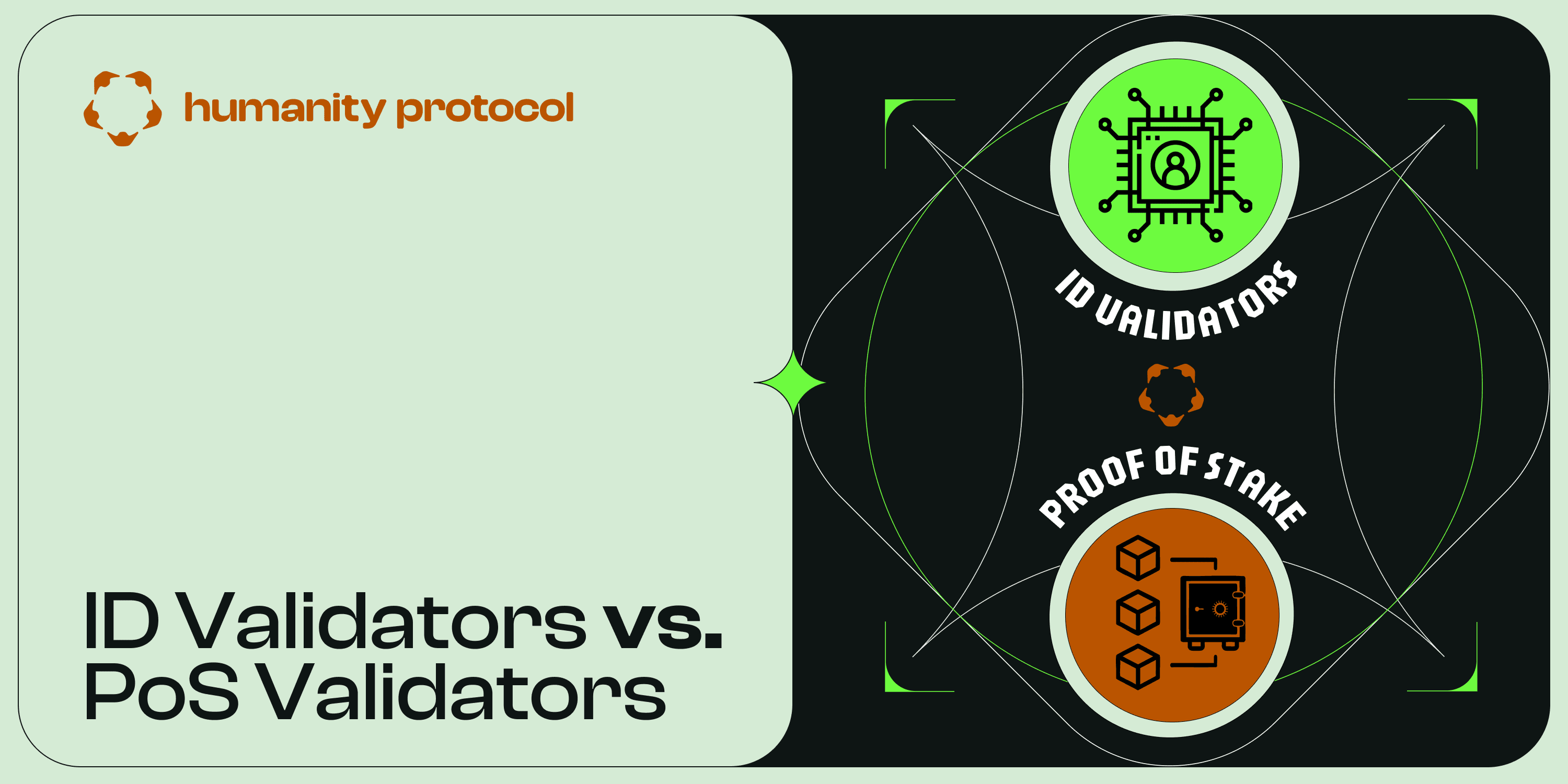Humanity Protocol’s Identity Validators vs. Proof of Stake Validators: How Do They Match Up?
While both systems rely on validation mechanisms, their fundamental purposes, security models, and economic incentives differ significantly.
Mar 7, 2025
Digital identity
Blockchain networks rely on validators to maintain security and trust. Traditionally, Proof of Stake (PoS) validators ensure the integrity of decentralized networks by staking tokens as collateral. However, Humanity Protocol introduces a new paradigm with identity validators, which play a crucial role in Proof of Humanity (PoH).
While both systems rely on validation mechanisms, their fundamental purposes, security models, and economic incentives differ significantly.
Purpose and Function
PoS validators are responsible for securing blockchain transactions. They validate new blocks, ensure consensus, and prevent fraudulent activities like double-spending. These validators must stake a certain amount of the network’s native token as collateral, which incentivizes honest behavior. Any attempt to act maliciously could result in losing their stake.
On the other hand, Humanity Protocol’s identity validators serve to confirm real, unique human identities on-chain. This process leverages biometric proofs such as palm scans and other information about each individual to verify their identity without compromising privacy. Rather than focusing on transaction security, these validators ensure sybil resistance — preventing bots or fake identities from exploiting decentralized applications, DAOs, and on-chain voting systems.
Security Models: Economic vs. Biometric Proof
PoS validators secure networks through economic incentives. The assumption is that validators with a financial stake in the system will act honestly because misbehavior results in financial penalties known as "slashing." The larger the stake, the higher the validator’s influence in block production and consensus, making it costly for malicious actors to compromise the network.
Identity validators, in contrast, operate based on biometric verification and other information rather than economic incentives. They ensure a user is a real, unique person through cryptographic attestations without requiring financial collateral. This shifts the security model from economic deterrence to biometric proof, making it far more resilient to sybil attacks. A single entity can accumulate a large number of PoS validator nodes if they have enough capital, but with identity validation, a person can only ever be one unique individual.
Incentive Structures
PoS validators earn rewards in the form of transaction fees and block rewards. The more they stake and validate transactions, the more they earn. This creates a direct economic loop where validators are financially motivated to participate actively in the network.
Identity validators in Humanity Protocol, however, are incentivized differently. They may earn rewards through acting honestly in proving that a person is who they claim to be. Their value proposition lies in the network effect — by ensuring sybil resistance, they create more trustworthy decentralized applications and governance models, which in turn strengthens the entire ecosystem.
Two Sides of the Same Coin
While PoS validators and Humanity Protocol’s identity validators share similarities in being crucial to blockchain networks, they differ in their core objectives and operational models. PoS validators secure financial transactions and consensus through economic stakes, while Humanity Protocol’s identity validators ensure real human participation in decentralized systems through biometric verification.
Both are fundamental to the evolution of blockchain, addressing different aspects of security and trust in Web3.
